Building an online business that succeeds starts with choosing the right eCommerce tech stack. No matter what eCommerce app development project you are planning to invest in, it will never turn fruitful until you select a robust technology stack. This decision greatly impacts your app's overall user experience, scalability and performance.
With early determination and selection of the best tech stack for eCommerce app development, enterprises can easily accomplish their ultimate business objective.
With several options available in the market, it’s challenging to select the right one.
In this blog, we’ll walk you through the concept of the best technology stack for eCommerce apps while throwing light on factors of how to choose the best eCommerce technology stack. We'll also cover the mistakes you should avoid during the selection process and provide examples of technology stacks used by eCommerce giants.
But, first let’s start with a brief overview of eCommerce technology stacks:
What Is an eCommerce Tech Stack?
An eCommerce stack is a set of tools and platforms that the owner of an online store uses to manage and run their business. These tools work together seamlessly to handle everything from sales to customer support, order fulfilment, payment processing, returns, content management, and shipping logistics.
The choice of tech stack can also influence the performance, adaptability, and development process of your app. To create an informed choice, it's essential to know different eCommerce technology stacks.
There are three main types of eCommerce app technology stacks, including front-end technologies, back-end technologies and third-party services.

Why Is It Essential to Choose the Right Tech Stack for an eCommerce App?
The eCommerce tech stack you choose plays a crucial role in driving your business's efficiency, customer satisfaction, and long-term success. Let’s delve into reasons to choose the best technology stack for eCommerce app development:
The right combination of technologies ensures that your app can handle high traffic loads, provide smooth navigation, and offer a secure payment gateway. It also plays a crucial role in determining the app's ability to scale as the business grows.
Moreover, the right eCommerce technology stack improves the maintainability and efficiency with which developers can build an app, thus saving time in future development or bug fixes. In addition, there is optimization of the costs of development and maintenance against integration with third-party services such as payment processors, CRM systems, etc.
The technology stack will ultimately determine the success of an eCommerce app. Thus, it is an important decision for delivering a seamless and reliable shopping experience.
Factors to Select the Right eCommerce Tech Stack
The ideal eCommerce development technology stack that can power your product for success is an outcome of careful consideration and analysis of several aspects. Let's delve into factors that influence the technology stack choice for eCommerce app development.

Business Requirements Analysis
Before diving into technical factors, it's crucial to analyze your business requirements. Here are a few questions you need to ask from yourself:
- What are my business goals?
- Who is my target audience?
- How much traffic do I expect?
- What features do I require for my eCommerce online store?
For example, if you want to target mobile users mainly, you need a responsive design for your app. If you are planning to handle large volumes of users and transactions, scalability should be your priority in choosing the right tech stack for your projects.
Choose a technology stack that aligns with your objectives, audience and expected growth.
*Always remember you need what's best for your app or target audience instead of the latest trend.
Project Scope and Size
The scope & size of your project directly impacts the tech stack you select for building an eCommerce app. For small-scale eCommerce platforms, you can choose lightweight frameworks and tools. If you’re planning to build a large-scale platform with extensive product catalogues and high traffic, go with back-end technologies like Node.js, Django, and Ruby on Rails integrated with scalable DB like PostgreSQL or MongoDB.
Compatibility with Existing Stack
When choosing a tech stack for eCommerce app development, ensure your stack is compatible with your existing systems or technologies. This compatibility ensures seamless integration and minimizes the requirement for extensive modifications. It also helps maintain an efficient workflow while maximizing the value of your current investments.
Performance and Scalability
As your business grows, your eCommerce website must seamlessly handle an increasing number of visitors and transactions. Slow or unresponsive apps can drive users away, while fast and scalable ones keep them engaged. Choosing a tech stack that prioritizes scalability and performance is essential to ensure your eCommerce app can effectively handle growth while delivering a seamless user experience.
Talent Availability
Check the availability of skilled developers for selecting the right tech stack for eCommerce app development. The best eCommerce tech stack with a broad talent base makes it easier to find and hire experienced developers. It will ensure you can save your dedicated development team quickly if required.
User-friendliness
Before making any decision regarding eCommerce stacks, ensure your stack enables the creation of a user-friendly interface that facilitates seamless navigation and outstanding shopping experience.
Front-end frameworks like Angular, Vue.js, Next.js or React are excellent technology stack choices for building intuitive and responsive user interfaces. Evaluate how easily the stack supports features like a search bar, product filters, and mobile optimization.
Security Aspects
When it comes to eCommerce app development, security plays a vital role. It handles sensitive customer details such as payment information and personal data. So, it's essential to select tech stacks that incorporate important security protocols, including;
- Implementing encryption to protect data
- Using SSL certificates to create secure connections between customers and servers
- Ensuring PCI DSS compliance for payment processing systems
Moreover, using secure coding practices, conducting periodic vulnerability assessments and ensuring that third-party services follow very strict security regulations to ensure a secure eCommerce platform.
Integration with Third-Party Services
Modern eCommerce platforms frequently integrate with third-party services like payment gateways, CRM tools, and analytics platforms. It’s crucial to select a tech stack that supports APIs and offers the flexibility to incorporate these services, ensuring optimal functionality and performance seamlessly.
Constraints on Budget and Timing
Your budget and timeline determine the tech stack to be selected. Platforms like Magento, WooCommerce, or Shopify offer open-source solutions that save money and reduce development time. The custom-built solution, although costing more, gives flexibility and scalability. Make sure that the budget constraints align with long-term business needs.
Popular Tech Stacks for eCommerce Development
The right tech stack is crucial for creating a robust and scalable eCommerce platform, whether it is web, mobile or both. Here's a breakdown of popular tech stacks for eCommerce development.
eCommerce Web Development Tech Stacks
Let’s check out the best technology stacks for eCommerce web development:

MEAN Stack
A potent set of technologies called MEAN stack is used to create eCommerce websites and online stores. It stands for MongoDB, Express.js, Angular and Node.js.
Breakdown of MEAN stack components:
- Database management/NoSQL DB: MongoDB/MySQL
- Backend web framework: Express.js
- Front-end framework: Angular
- An open-source cross-platform server: Node.js
Looking to build your eCommerce platform? Hire MEAN stack developers to leverage this technology stack for a robust, high-performing online store tailored to your business needs.
MERN Stack
MERN is used for modern, dynamic, fully functional eCommerce web development projects. It stands for (MongoDB, Express.js, React, Node.js) stacks that provide a platform for users to view and buy different products. The server side (Node.js with Express) handles the API for product data stored in MongoDB.
On the other hand, React manages user interfaces and interacts with the server to fetch and represent product details. Thanks to its performance, scalability and flexibility, MERN is more popular between enterprises and developers.
Breakdown of MERN stack components:
- A NoSQL database: MongoDB
- Back-end framework: Express.js
- Front-end framework: React
- JavaScript Runtime: Node.js
LAMP Stack
LAMP (Linux, Apache, MySQL, and PHP) is a reliable choice for creating scalable and high-traffic e-commerce platforms. Thanks to its robust database management capabilities, you can handle product data, user information and transactions on an online store.
Breakdown of the LAMP stack components:
- Operating System: Linux
- Web Server: Apache
- Database management: MySQL or MariaDB
- Scripting Language: Perl / PHP / Python
Python-Django
Django framework is used parallelly with Python and provides an ultra-level security environment for back-end developments. Python and Django offer a strong technology stack, providing efficiency in eCommerce web development.
Breakdown of the Python-Django components:
- Web Server: Apache
- Database management: MySQL or PostgreSQL
- Scripting Language: Python
.NET Stack
A .NET stack includes ASP.NET MVC, Entity framework, React, SQL Server and Azure cloud services for eCommerce development. This combination of technologies provides secure authentication, payment gateways, inventory management and a seamless shopping experience.
Breakdown of Key components of a .NET eCommerce stack:
- Backend Framework: ASP.NET MVC and ASP.NET Web API
- Database: SQL Server, Azure SQL DB
- Entity Framework: ORM (Object-Relational Mapper)
- Front-end Frameworks: React, Angular
Java Spring Boot
If you want to build a robust, scalable and efficient eCommerce platform, Java+Spring Boot is the right technology stack. Thanks to its versatility, strong community support and great ability to handle complex business logic, this is a popular eCommerce tech stack among developers and enterprises.
Breakdown of key components of a full stack Java + Spring Boot:
- Front-End Development: React, Angular, or Vue.js integrate seamlessly with Java
- Back-End Development: Spring Boot
- Database Integration: MySQL, PostgreSQL, NoSQL DB
- API Integration and Microservices: Spring Boot's RESTful services, third-party APIs such as payment gateways, logistics, or CRM systems.
- Deployment and Hosting: AWS, Azure, or Google Cloud with Java's compatibility with tools for containerization, such as Docker and Kubernetes.
Mobile App eCommerce Development Tech Stacks
Let’s check out the best tech stack for eCommerce mobile app development:

Flutter
If you want an app that feels native but doesn’t want extended timelines associated with separate iOS and Android builds, Flutter is the right tech stack. Thanks to its ability to minimize costs without sacrificing performance, it’s a game-changer for enterprises to scale fast and step ahead of the competition.
Flutter includes several technologies:
Flutter framework (powered by Dart programming languages)
Firebase: For backend services like authentication, database, storage
Payment gateway integration: Stripe or PayPal
State management solution: Provider or BLoC
Flutter eCommerce mobile app tech stack also includes additional libraries for features like image caching, network handling and advanced UI components. It delivers enterprise-grade performance with a single codebase.
React Native
For businesses looking to move fast while keeping development costs in check, React Native is the ideal solution. It offers an extensive library of reusable components that simplify the maintenance of cross-platform applications.
A standard React Native tech stack for building an eCommerce mobile app includes:
- Core framework: React Native
- Programming Languages: JavaScript or TypeScript
- State Management: Redux or Mobx
- Navigation Library: React Navigation
- HTTP request: Axios or Fetch
- Various UI component libraries
This allows for cross-platform development with an emphasis on code reusability and delivers a user experience comparable to native apps.
.NET MAUI
.NET MAUI (Multi-platform App UI) is an excellent framework for building cross-platform eCommerce mobile apps, especially for businesses already integrated with Microsoft technologies. It allows developers to create native apps for iOS, Android, macOS, and Windows using a single .NET codebase, streamlining development while maintaining platform-specific functionality.
A typical .NET MAUI tech stack for eCommerce mobile app development includes:
- Cross-Platform Framework: .NET MAUI
- Programming Language: C#
- Backend APIs: ASP.NET Web API or a similar RESTful service
- Database: SQL Server, PostgreSQL, or a NoSQL
- Payment Gateway Integration: PayPal, Stripe
- Libraries for Features: Image Caching, Push Notifications, and Advanced UI Components
With .NET MAUI, businesses can leverage Microsoft’s ecosystem to develop scalable and secure cross-platform eCommerce mobile apps with authentication, secure transactions, and complex internal workflows.
PWA
Progressive Web Applications (PWAs) are a cost-effective and rapid solution for developing eCommerce mobile apps, offering an app-like experience directly through the browser. PWAs eliminate the need for customers to download an app from an app store, providing instant access to your platform and ensuring a seamless user experience.
A typical tech stack for building a PWA eCommerce mobile app includes:
- Programming Languages: HTML, CSS, JavaScript
- Frontend Framework: React, Vue.js, Angular
- Backend Technologies: Node.js, REST APIs
- Database: MongoDB (NoSQL DB), PostgreSQL (Relational DB)
- Caching Tools: Workbox or other libraries for efficient resource caching and offline access.
- Responsive Design Tools: CSS frameworks like Tailwind or Bootstrap
For eCommerce businesses that prioritize rapid deployment, cost efficiency, and broad accessibility without app store constraints, PWAs offer a powerful alternative. They combine the speed of web development with the functionality of mobile apps, ensuring a seamless and engaging omnichannel customer experience.
Native (Kotlin/Swift)
When building a flagship eCommerce mobile app that demands flawless performance, robust security, and unparalleled customization, native development with Kotlin (Android) and Swift (iOS) is the optimal choice. Native development ensures direct access to device-specific features, providing superior performance and user experience, even for the most complex functionalities.
Breakdown of key tech stack of Native eCommerce app development:
- Programming Languages: Kotlin (for android) and Swift (for iOS)
- Development environments: Android Studio, Xcode (Apple's official IDE)
- UI Framework: Jetpack Compose (Android), SwiftUI (iOS)
- Backend Integration: RESTful APIs or GraphQL (for efficiency communication), AWS or Firebase (for real-time database)
- Payment Gateways: Apple Pay, Google Pay, or third-party options like Stripe or PayPal
For businesses prioritizing premium quality, security, and scalability, native development with Kotlin and Swift is the gold standard.
eCommerce Technology Stacks Comparison
Here’s a comparison table of popular technology stacks for eCommerce app development:
Category | Technology Stack | Pros | Cons | Best For |
Frontend | React.js | Fast, scalable, large community support, SEO-friendly with proper configuration | Steep learning curve, requires additional tools for server-side rendering | Large scale, high-performance eCommerce sites |
| Vue.js | Simple integration, fast, lightweight, easy to learn | Smaller community, limited tooling compared to React and Angular | Small to medium eCommerce sites |
| Angular | Two-way data binding, powerful CLI, rich ecosystem | Steep learning curve, complex state management | Enterprise-level eCommerce platforms |
Backend | Node.js (with Express.js) | High performance, non-blocking I/O, great for handling concurrent requests | Requires strong JavaScript knowledge, asynchronous programming can be difficult for beginners | Real-time eCommerce, scalable APIs, fast transactions |
| Ruby on Rails | Convention over configuration, large set of libraries, quick to build and iterate | Can be slow for very large apps, high memory consumption | Rapid development, MVPs, small to medium eCommerce |
| Django (Python) | Security-focused, clean design, great for data-heavy sites | Slower than other stacks, fewer eCommerce-specific libraries | Data-centric, security-heavy platforms |
Databases | MongoDB (NoSQL) | High scalability, flexible schema, good for large datasets | Not ideal for complex transactions, consistency can be challenging without proper setup | Flexible data models, large-scale product catalogs |
| MySQL (SQL) | Mature, great for complex queries, ACID-compliant | Horizontal scaling can be challenging, slower write performance | Relational data-heavy eCommerce platforms |
| PostgreSQL | Open-source, supports JSON, great for complex queries and transactional operations | Can be complex to manage for large-scale apps, slower in certain use cases | Complex applications needing relational and non-relational support |
eCommerce Platforms | Shopify | Easy to use, fully managed, excellent for small to medium businesses | Less flexibility in customization, higher transaction fees | SMBs, quick-to-market stores |
| Magento | Highly customizable, large community, great for complex eCommerce sites | Requires server management, can be resource-intensive | Medium to large businesses with complex needs |
| WooCommerce (WordPress) | Easy integration with WordPress, flexible, wide plugin ecosystem | Less scalable for larger sites, can be slow with a large number of products | Small to medium-sized stores using WordPress |
Payment Gateway | Stripe | Easy to integrate, global reach, supports multiple currencies, flexible API | Fees for certain countries, requires custom implementation for advanced use cases | Startups, SMBs, global businesses |
| PayPal | Widely accepted, trusted by consumers, easy to integrate | Transaction fees, currency exchange rates, less control over the user experience | Small to medium-sized businesses |
| Razorpay | Tailored to Indian market, supports recurring billing and easy integration with Indian payment methods | Less global reach compared to PayPal and Stripe | Indian market eCommerce platforms |
Hosting & Cloud | AWS (Amazon Web Services) | Highly scalable, reliable, wide range of services, global reach | Can be complex to set up, pricing can be unpredictable | Large-scale eCommerce platforms needing high scalability |
| Google Cloud | Powerful infrastructure, AI/ML capabilities, global availability | Pricing complexity, less established than AWS | Data-intensive eCommerce platforms |
| DigitalOcean | Simple setup, cost-effective for smaller businesses, good for developers | Limited scalability options compared to AWS, lacks enterprise-level features | Small to medium businesses looking for budget hosting |
Mistakes to Avoid When Choosing the Right eCommerce Tech Stacks
A tech stack comprises all the technologies and tools required to run the full stack, front-end and back-end of your eCommerce platform. The wrong combination of the same can lead to operational inefficiencies, poor user experience, and even lost sales. Here are some common mistakes to avoid when choosing the right eCommerce tech stack for your business.
- Failing to assess your business model, scale, and customization requirements can lead to choosing a tech stack that doesn’t align with your goals.
- Choosing a tech stack that cannot scale with your business as it grows can lead to performance issues and inefficiencies down the road.
- With mobile commerce on the rise, neglecting a mobile-first approach can alienate a huge chunk of your customer base.
- A complex tech stack with too many features will lead to the high cost of maintenance and technical issues.
- Failure to prioritize security, data protection, and compliance leads to vulnerabilities, data breaches, and legal issues.
- Focusing only on initial costs and not considering ongoing expenses, maintenance, and future upgrades will result in higher costs in the long run.
Examples of Technology Stacks Behind Market-Leading eCommerce Companies
Let’s check out some examples of tech stacks chosen by big eCommerce players and explore what makes them successful.
Amazon
One of the world’s largest eCommerce marketplaces, Amazon started by selling books but gradually expanded to sell apparel, electronic gadgets, furniture, and much more. They target cloud computing, artificial intelligence and digital streaming.
Amazon app used tech stacks including React, Java, MySQL, Amazon SQS, Perl, and Redux for performance, scalability and flexibility.
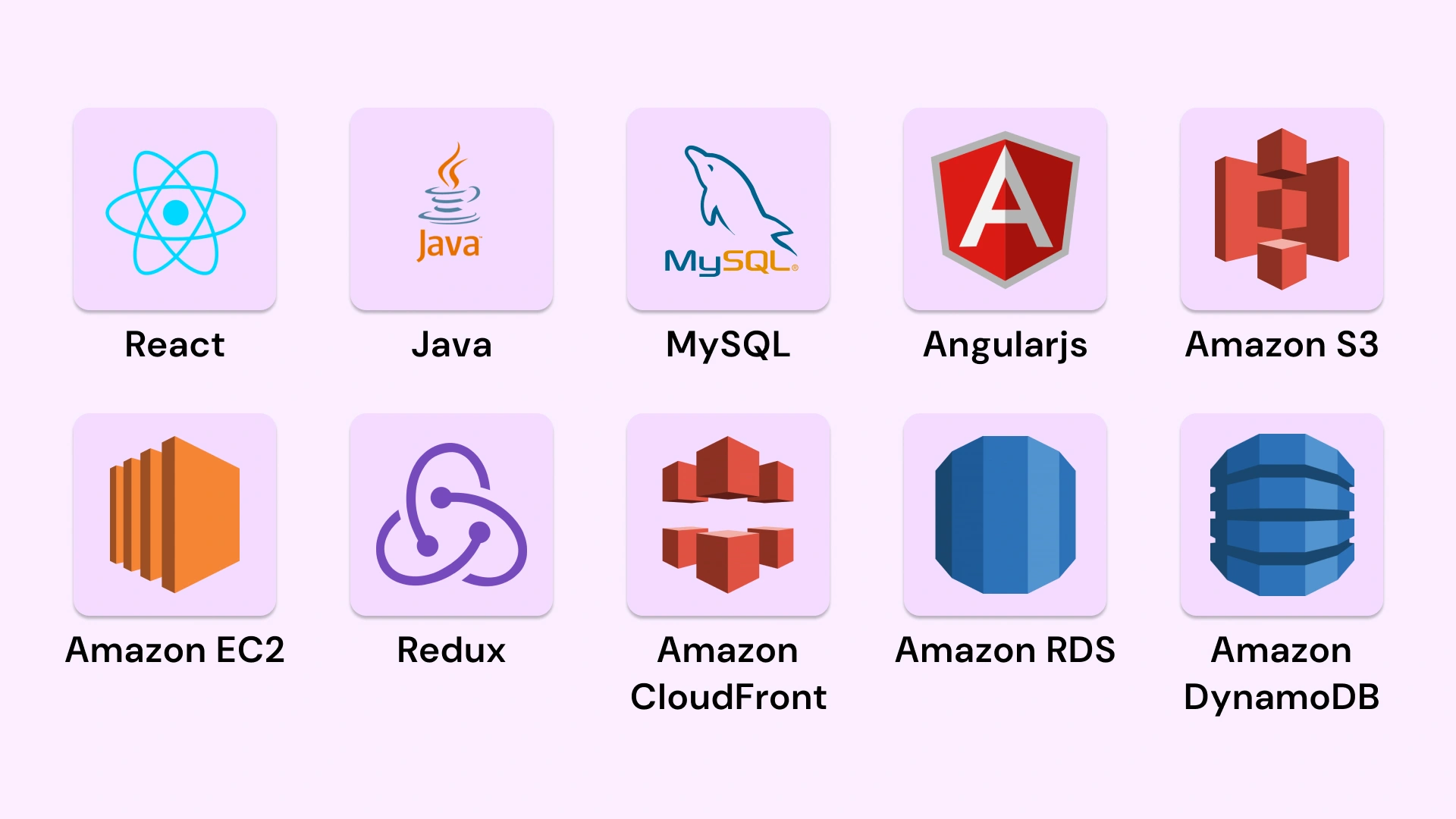
If you are planning to build an app like Amazon, go with these tech stacks for getting success in today’s competitive market.
In addition, they use machine learning to personalize user interactions. It enables them to handle millions of transactions and customers worldwide without any performance challenges.
Etsy
Etsy, an American company, specializes in vintage and handmade products, offering a wide range of items such as bags, jewelry, clothing, and more. This eCommerce tech giant had 91.2 million active buyers and 6.2 million active sellers, with a revenue of $662.4 million in 2024.
Here’s tech stacks of Etsy in below image:
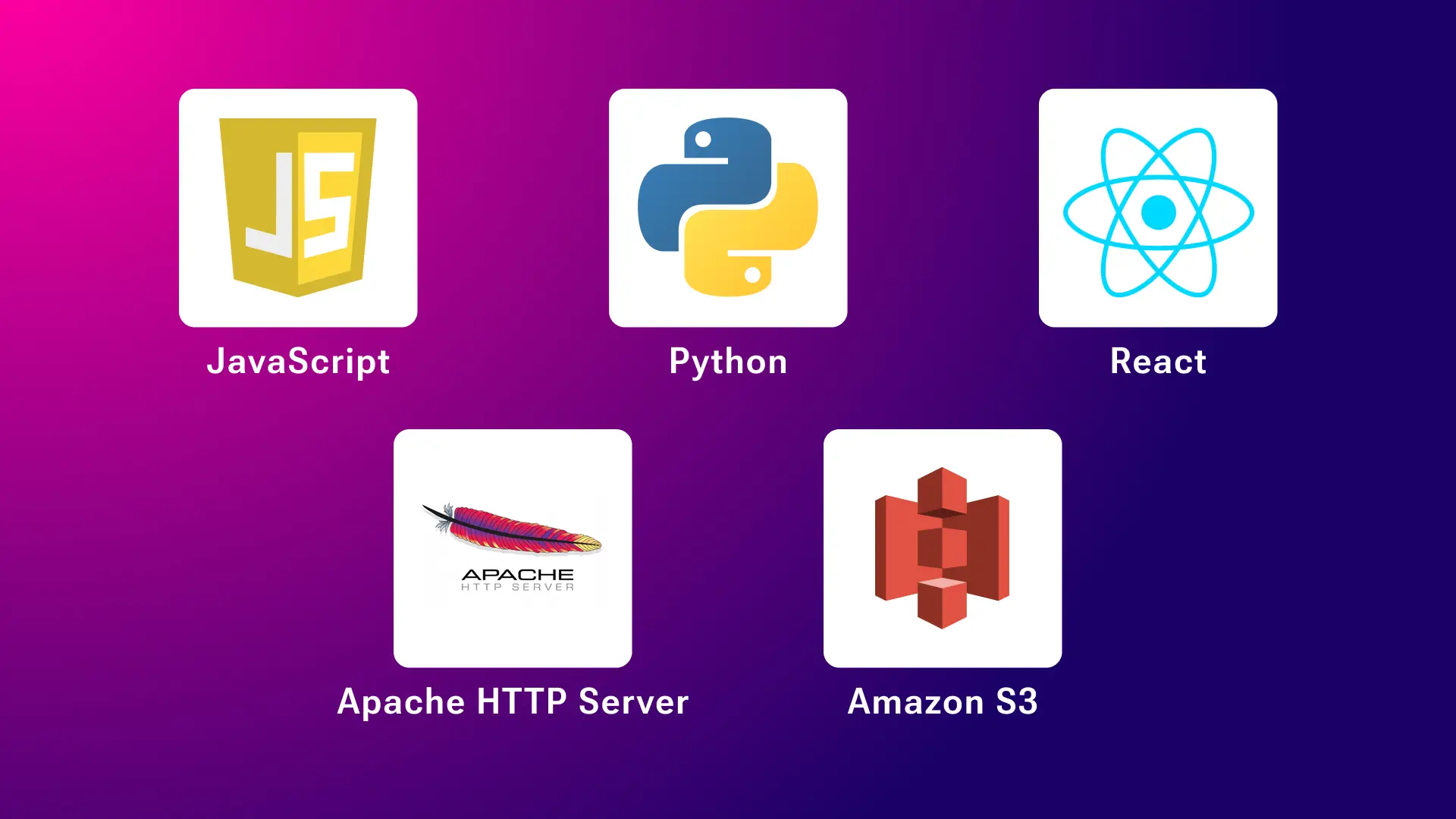
Walmart
Walmart is a multinational retail corporation based in the United States. The company operates discount department and grocery stores across the United States and in 24 other countries. It has 10,526 locations, operating under 48 different brand names.
The Walmart eCommerce platform uses many technologies, including Python, Node.js, React, Java, MySQL, AngularJS, and Ruby, among others, as shown below image:
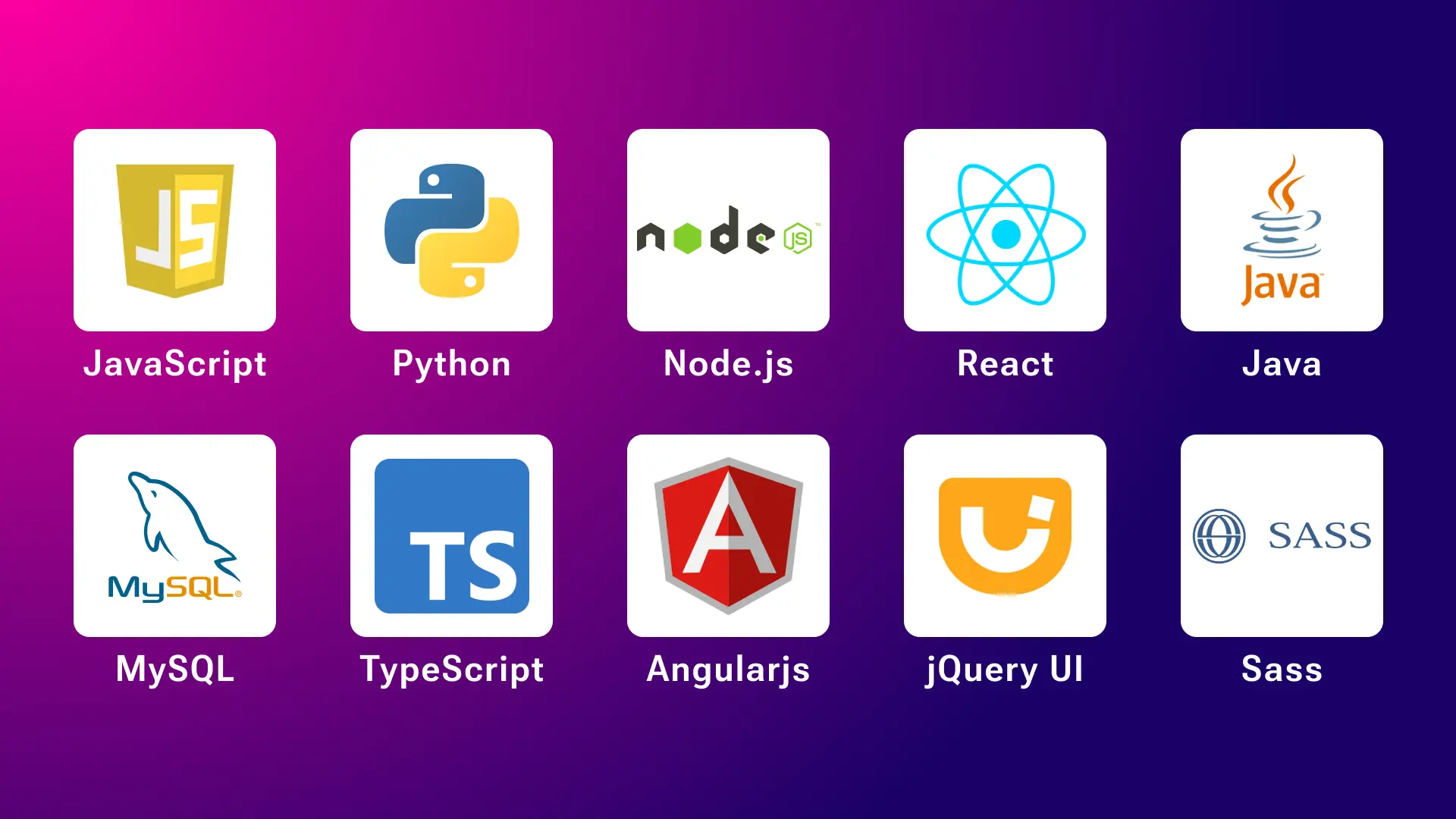
eBay
An American multinational eCommerce company, eBay Inc. provides business-to-consumer and consumer-to-consumer sales through its website. It is a multibillion-dollar eCommerce business with 133 million active users worldwide.
The eBay’s tech stacks focus on high performance and reliability. Java and Node.js are used to develop the backend because of their ability to handle a huge number of transactions. Moreover, caching through Memcached is applied to ensure that the site stays responsive even during periods of high traffic.
Best Platforms to Build an eCommerce Platform
eCommerce platform allows online businesses to handle the website, sales, marketing and operations. It plays a crucial role in determining the stability and profitability of your business. Let's see different eCommerce platforms for building online stores:
- Shopify is considered the best eCommerce platform for ease of use and features.
- WooCommerce is great for budget-conscious users with a WordPress website
- BigCommerce is ideal for high-volume sellers
- Wix is user-friendly for building a website with integrated eCommerce
- Square Online is specifically good for businesses with in-person sales thanks to its POS integration.
Choose VLink to Integrate Tech Stack into Your eCommerce Platform!
VLink, a reliable eCommerce app development company, build online store as per your business needs. We integrate the right and latest technology stack to deliver eCommerce websites and apps in cost-effective, on-time deliveries with absolute transparency and confidentiality.
Our dedicated software development team employ the most effective eCommerce tech stacks to build your online store. We use strong front-end development frameworks (Angular, React, and Vue.js) and back-end frameworks (Node.js, Python, and PHP) for the building of scalable, safe, and fast eCommerce websites and apps. Furthermore, we incorporate strong databases such as MySQL, MongoDB, and PostgreSQL to handle vast amounts of data efficiently.
Our eCommerce platform development tech stack is designed to meet every need in your project - robust security, high performance, and seamless scalability. You can build a shopping app like Temu or Walmart; we make sure everything is handled meticulously so you have the best possible outcome for your business.
Final Say!
Choosing the best technology stack for eCommerce websites can significantly enhance customer satisfaction and drive sales. A well-rounded tech stack includes top-tier eCommerce solutions that optimize workflows and increase store efficiency.
By selecting the best tech stack for an eCommerce build, you can boost performance and streamline customer support. Partnering with us means working with a team of experts dedicated to helping you reach your business goals using the most advanced and appropriate tech stack for your eCommerce platform.
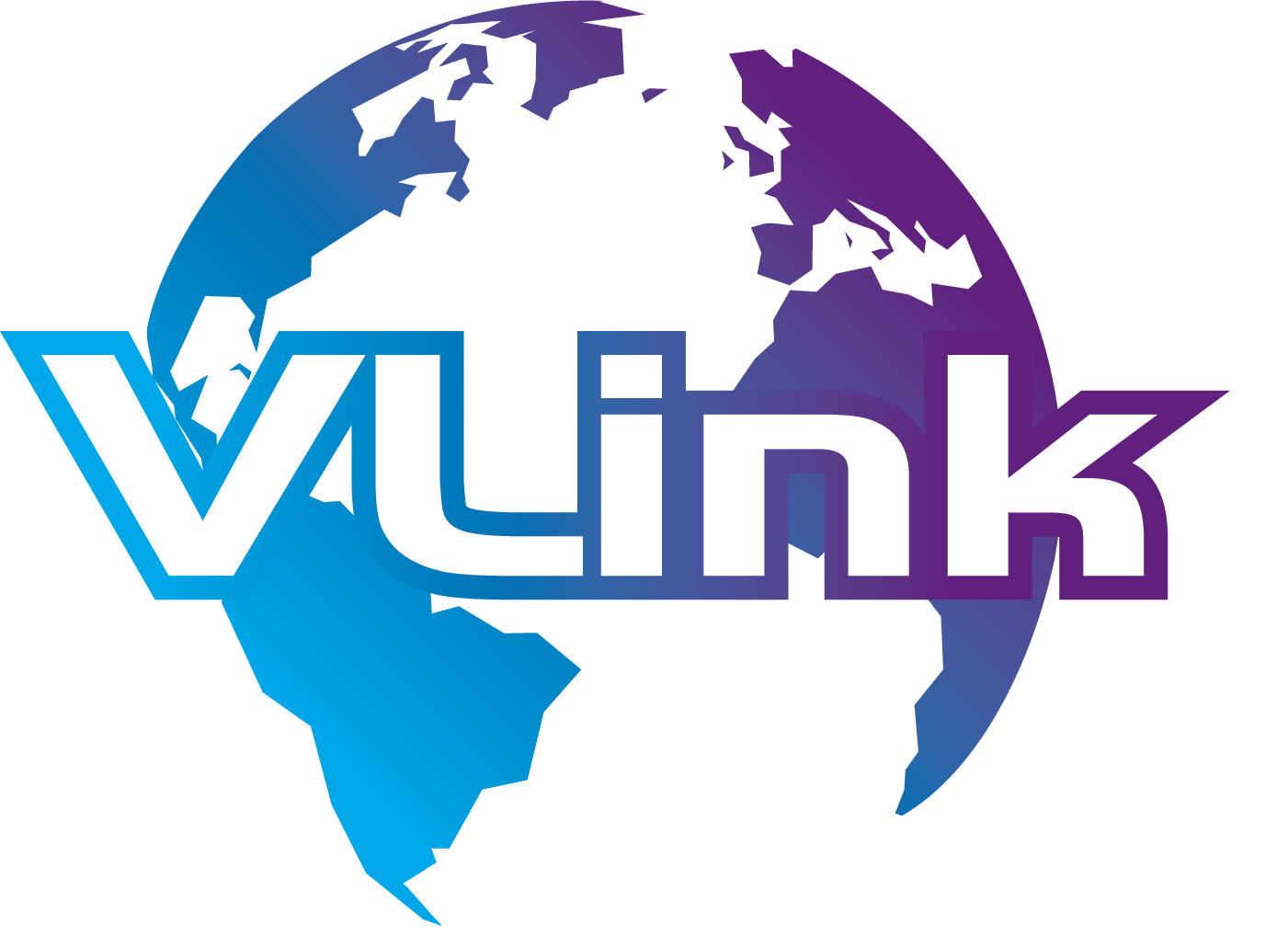




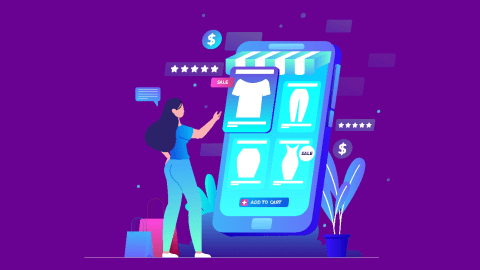



 Shivisha Patel
Shivisha Patel
















